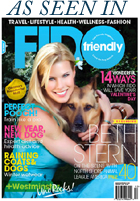THIS PAGE IS DEDICATED TO IMPORTANT IDEAS, TOPICS, AND INFORMATION FROM THE SHOW. I WANT TO KEEP THIS PAGE FOR OVERFLOW ITEMS THAT REALLY NEED TO BE CONVEYED HERE BUT MIGHT BE A BIT TOO LONG FOR THE BLOG! SO PLEASE ENJOY AND LEARN FROM THESE “EXTRAS!”
We Love Ya!
Jeff and Butch
_____________________________________________________________________________________
from our August 6, 2009 Show
VET TIPS for Making Pet Food
Authored by Dr. Donna J. Spector, DVM, DACVIM-Internal Medicine
NOTE: These tips are intended for the pet owner who is making greater than 50% of their pet’s food. If you are only occasionally giving your pet a home-cooked meal (once to a few times a week), the rigorous vitamin-mineral supplement information is not as critical. Ask your vet if you have questions.
There are many advantages to home-cooking for your pets. I love the option of home-cooking as if gives pets a huge variety of fresh healthy ingredients and owners can be confident in the quality of the food they are giving. Home-cooking, when done properly, is a labor of love, but one your pet will thank you for again and again!
Whenever a pet owner undertakes the project of home-cooking for their pet, I recommend they get their veterinarian or a veterinary nutritionist involved for specific advice tailored to their pet’s needs. Numerous studies have tested and proven homemade diets are often fraught with deficiencies or overages which can be detrimental to your pet’s long term health and must be avoided. Home-cooking is a very healthy alternative but it is important to work with someone knowledgeable about diet formulation to avoid long term issues.
The first question that must be asked is “what do dogs and cats require nutritionally?” AAFCO requirements state that adult dogs require approximately 18% protein and 5% fat in their daily diet, while adult cats require 26% protein and 9% fat. Both have additional specific recommendations for calcium, phosphorus and other critical vitamins. There are no recommendations made for carbohydrates. It is now well recognized that these are requirements for sustenance/maintenance not levels that will allow your pet to reach and perform at optimal health levels.
My recommendations for healthy dogs and cats to achieve and maintain optimal health are as follows:
Dogs: 30-40% protein, 10-20% fat, 40-60% carbs.
Cats: 40-50% protein, 10-30% fat, 20-25% carbs (fiber-rich vegetable carbs are better choices than grains for cats!)
Getting prepared to start home-cooking. Follow these tips:
- CALORIE INTAKE: you must know how many calories your pet should eat each day so ask your veterinarian to help you with this calculation. This is a great time to get your pet to lose weight if they need it! Most average sized cats need between 200-250 calories each day. Dogs are much more variable due to their vastly different sizes!
- DIET RESTRICTIONS? Ask your vet if your pet’s diet should have any restrictions (such as higher or lower protein or carbohydrate levels). Is your pet allergic to a particular food?
- FOOD GROUPS: For a complete and balanced diet make sure you are giving your pet foods from the following groups: carbohydrates/fiber, protein, fat, minerals (notably calcium) and vitamins. A good rule of thumb to remember for dogs is: 1:1 (up to 2:1) carbohydrate:protein ratio. A good rule of thumb to remember for cats is 2:1 protein:carbohydrate ratio. In other words, for a cat if you put in 1 part carb (as a fiber-rich veggie), add in at least 2 parts meat protein.
- VARY YOUR INGREDIENTS: People don’t run into problems with deficiencies because we vary our diet greatly from day to day and select different types of meats and veggies, etc. You should pick a list of ingredients you are interested in cooking with and vary them every few days (with each new batch of food!). Make sure you are familiar with your ingredients and their nutritional value (by reading the back of the label for protein, fat, calories, etc). Learn how to properly cook and handle the raw ingredients to prevent risk of food-borne illness. Be creative! Think outside the chicken and rice box.
- THINGS TO TRY OR AVOID: Delve into whole grains like barley and oats, veggies like sweet potatoes and peas. Try to avoid high glycemic carbs like corn, rice and wheat. Make sure you are using meat protein so pets get their essential amino acids. Not all veggie protein sources meet pet’s unique amino acid requirements. I like to use the natural fats from moderately fatty cuts of meat or added skins, fish oil, etc. I prefer to steer clear of veggie oils.
- LIVER AT LEAST ONCE WEEKLY: I recommend feeding liver at least once weekly. Butcher-quality liver is exceptionally nutrient-dense and often corrects any amino acid deficiencies and also provides essential fatty acids and cholesterol that many home-cooked diets lack.
- DON’T FORGET THE MINERAL SUPPLEMENT: This is one of the biggest errors people make when home-cooking for pets. Most home-cooked diets are deficient in the mineral calcium and must be supplemented. If you follow my recommended percentages above, only a calcium supplement is needed and I recommend calcium carbonate. However, if your protein component is less than your carbohydrate component of the diet, your must add both calcium and phosphorus. Bone meal or dicalcium phosphate are excellent supplements in that case. DO NOT add the mineral supplement to the food during or after cooking. Add it right before feeding.
- DON’T FORGET THE VITAMIN SUPPLEMENT: Another big error people often make when home-cooking for pets. If your pet is eating ONLY this food, they must be supplemented or they will be deficient. An OTC adult multivitamin-mineral supplement with no more than 200% of recommended daily allowance for people works well for dogs and cats at ½ to 1 tab/day. Vet supplements can supply anywhere from 0-300% daily allowances and your veterinarian can advise you if you are using that product. DO NOT add the vitamin supplement to the food during or after cooking. Add it right before feeding.
- CATS MUST GET TAURINE: It is critical that cats on home-cooked diets receive a taurine supplement (250-500mg/day). Do not cook the taurine with the meal. Add it right before feeding or give it as a tablet directly to your cat.
- USE IODIZED SALT: If your recipe calls for salt, make sure it is iodized for an iodine source.
Now it is time to actually make the food. A few tips:
1. HANDLE WITH CARE: Home-cooked diets are high in moisture (70%) and lack preservatives, so they are susceptible to bacterial contamination when left at room temperature for more than 2 hours. It is also CRITICAL to handle raw and cooked ingredients very carefully to avoid bacterial contamination.
2. COOK INGREDIENTS SEPARATELY: Cook carbs and protein sources separately. Carbs need to cook longer to break down some of the starch ingredients to make them more digestible. Proteins need to cook a shorter period of time to prevent destruction of the protein. Mix together in the blender after cooking.
3. DO NOT COOK THE SUPPLEMENTS: Do not cook the vitamin or mineral supplement or add it to the food before you are ready to feed it. Add it separately each day. You can crush or grind it and mix it with the meal for ease of administration.
4. USE A BLENDER: Once the ingredients are cooked, mix them in a blender to thoroughly combine the ingredients so each cup of food has the same nutrient level. This also prevents your pet from picking out certain ingredients preferentially.
5. HOW TO DETERMINE CALORIES OF YOUR HOME-COOKED FOOD: Pay attention to the amounts of food you put into the blender. Calculate the total calories put in and then divide it by the total number of cups in your blender at the end (there are almost always measuring hash marks on the side). This will equal the calories per cup of your new food. Since you already have asked your vet how many calories your pet needs each day, you will know exactly how many cups of food to feed your pet.
6. STORING THE FOOD: You can store 3 days worth of food in the refrigerator. If you have made more, freeze the unused portion but use it within 1-2 weeks.
_____________________________________________________________________________________
A Great Recipe from our August 6, 2009 Show!
Here’s Raja’s staple. It’s his favorite no nonsense dinner. Not fancy and not exotic, but down home good. I make it with organic ingredients, but, let’s be honest, Raja’s a small dog and I only have one of him. You decide what’s workable. (I have it on the authority of a member of the United Farm Workers of America (UFW) that non organic green beans are the recipients of great amounts of pesticides, so maybe go for the organic beans. They’re cheap enough.)
1 lb boneless chicken thighs
1 lb bag frozen organic green beans
½ cup brown rice
2 ½ cups low salt chicken broth
1 tbsp. olive oil
Saute the chicken thighs in olive oil until brownish, add the brown rice and saute it for a few seconds, add the beans, stir, add the broth. Cover; allow to come to a boil. Reduce to a low simmer. Cook until rice is tender and liquid is absorbed. Raja likes this swirled in a food processor. Big dogs may like it as is. For Raja this yields about 5 nights of dinners.
Happy travels, Helen and Raja >>> More Recipes at www.traveldogbooks.com
_____________________________________________________________________________________
|
Dr. Spector answers the question “why does my dog eat poop?”
Copraphagia (poop eating) is usually a nasty learned habit and not a medical problem. Here are the top reasons why dogs eat poop and what you can do to curb their appetite!
|





























